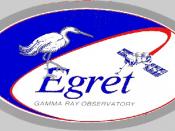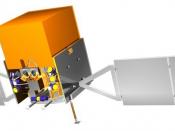GLAST stands for Gamma Ray Large Area Space Telescope. It is currently being built at the NASA space center. GLAST will be used for gamma-ray astronomy, and to study how black holes work. The launch of GLAST is expected in September of 2006.
GLAST is a multi-agency, international space mission that will study the cosmos in the energy ranges of 10 keV to 300 GeV. After several successful missions in gamma-ray astronomy, EGRET (Energetic Gamma Ray Experiment Telescope) was created and put on the CGRO (Compton Gamma Ray Observatory). Launched in 1991, EGRET made the first complete survey of the sky in the 30 MeV - 10 GeV range. EGRET showed the high-energy gamma-ray sky to be surprisingly dynamic and diverse, with sources ranging from the sun and moon to massive black holes at large redshifts. Most of the gamma-ray sources detected by EGRET are still unidentified.
In light of the discoveries with EGRET, the potential of the next generation gamma-ray telescope can be appreciated.
The GLAST will open this high-energy world to exploration and help us to answer these questions. With GLAST, astronomers will at long last have a superior tool to study how black holes, notorious for pulling matter in, can accelerate jets of gas outward at fantastic speeds. Physicists will be able to study subatomic particles at energies far greater than those seen in ground-based particle accelerators. And cosmologists will gain valuable information about the birth and early evolution of the Universe.






Needs more.
There doesn't quite seem to be enough information in this paper. What were your resources?
0 out of 0 people found this comment useful.